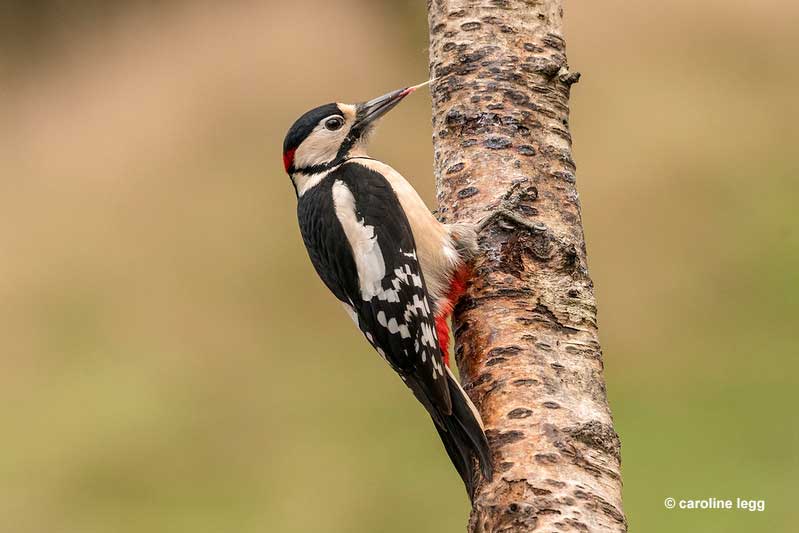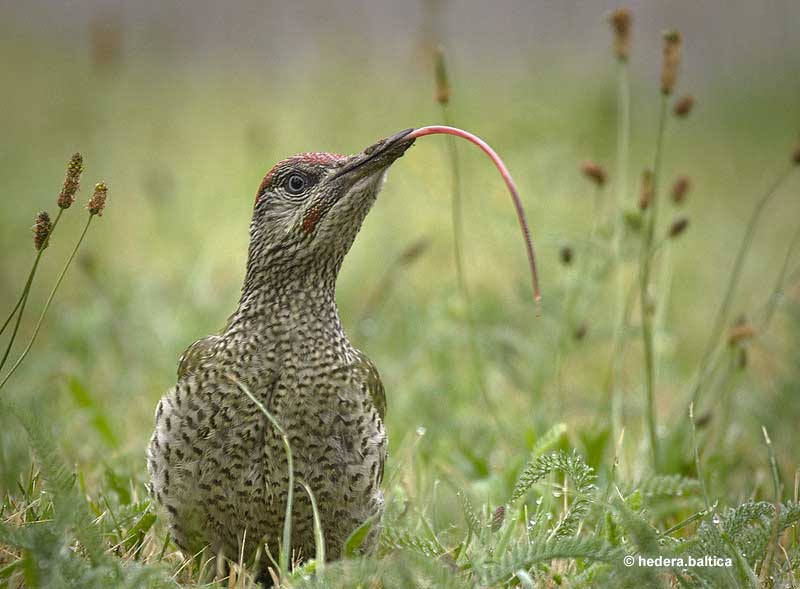
Woodpeckers are such unique and funny birds! In most places, at least one or two species of these natural headbangers come to the backyard. With a close look, you might also notice an extra-long tongue.
But do you know why they stick them out and how they use them? Find answers and more about woodpecker tongues in this article!
How do woodpeckers use their tongues?
Woodpeckers don’t have long tongues for nothing. Without them, they wouldn’t be able to survive! At least, the birds wouldn’t be able to eat anything. Although some woodpeckers do fly into the air and catch insects with their beaks, even those few species also use their tongues to catch other types of food.
Just as most people use their hands to pick up a sandwich or bring other food to their mouths, woodpeckers use their tongues for the same reason.
Instead of picking up a slice of pizza or plucking an apple from a tree, woodpeckers use their tongues to bring grubs, ants, and other bugs into their beaks.
Related: Why do birds have tongues?
This is basically what a woodpecker is doing when we see one tapping on a tree and then putting its beak close to the trunk. After making a hole or removing bark, the bird probes its tongue into crevices to catch hidden insects and grubs.
Although they can’t see the insect when woodpeckers touch it with their tongue, they “spear” the insect and bring it to their mouths. Flickers and other species that feed on ants use their long tongues in a similar manner to probe into anthills and lap up ants from the ground.
The Anatomy
Woodpecker tongues have a sharp point and are long, narrow, tube-like structures that snake in and out of their beaks. The tongues of most woodpecker species also have some barbs around the tip to help them latch onto bugs.
Like people, their tongues are connected to a small structure called a “hyoid bone.” This helps us and woodpeckers control our tongues to aid with eating, swallowing, and, in the case of people, speaking.
However, while our hyoid bones are found below our jaws, woodpeckers have this structure wrapping around their entire skull! This means the base of their tongue is actually near the top part of their beak, right by their nose.
The hyoid and connected tongue muscles start there, then split into two distinct parts as they go up and over the bird’s skull. These two parts continue along each side of the back of the skull before wrapping below the bottom. At this point, the tongue rejoins and then exits in the bird’s beak.
The woodpecker contracts its hyoid muscles to extend its tongue and relaxes them to bring it back into its mouth. They also have sticky saliva on their tongues that helps them catch their insect prey.
How different are woodpecker tongues?

Woodpecker tongues mostly differ from those of other birds by their length. As far as is known, no other birds have tongues nearly as long.
Unlike most other birds, woodpecker tongues also have sharp, barbed tips, and sticky saliva. They have these adaptations to help them pick their insect prey out of crevices.
Similarly, other birds also have tongues adapted to their diets. For example, to help suck marrow out of bones, vultures and other scavengers can have tongues with a groove in the middle of it.
Birds that feed on seeds and nuts tend to have thick and muscular tongues to help them manipulate their food and then extract the pieces of seeds and nuts after they open or crush it. In the case of parrots, they also use their muscular tongues to make all sorts of sounds!
Geese and other birds that pick grain from plants and the ground also tend to have a hard tip on their tongue. This tip helps them use their tongue a bit like a finger and aids in picking up grains.
The tongues of hummingbirds can also be pretty long and help them sip nectar as fast as possible. Other insectivorous birds gather nectar with brush-like structures on their tongues.
Which woodpecker has the longest tongue?
Northern Flicker is the woodpecker with the longest tongue. This common woodpecker species has a tongue that can extend two inches beyond the tip of its chisel-like beak!

It needs that extra-long tongue to catch its favorite food; ants. Like an avian anteater, Northern Flickers use their long and sticky tongues to reach ants inside their underground nests. After finding an ant nest, flickers probe with their tongue to lap up dozens of these little insects.
Fun Facts
- Despite their large size, Pileated Woodpeckers have much shorter tongues than other woodpeckers. However, they still have a unique one! Instead of having an extra-long tongue, these big woodpeckers use a shorter tongue with big barbs to catch hefty beetle larvae.
- Woodpecker tongues also help protect their brains! The muscles and structure of their tongues wrap around their skulls to further cushion their heads while pecking.
- Sapsuckers have small brush-like structures that help them lap up tree sap. In addition to eating the sap, they also eat small insects stuck to it.
- Some woodpeckers also eat nectar. These woodpeckers can visit hummingbird feeders and stick their tongues in to access the sugar water.
- Woodpeckers frequently clean their tongues. If you see a woodpecker sticking its tongue out but not eating anything, it’s probably trying to clean it.
- Acorn Woodpeckers eat acorns in addition to insects. They hammer open the nuts and then use their tongues to extract pieces of acorns.
- The American Three-toed Woodpecker and the Black-backed Woodpecker can become more common in areas of burned forest. Such areas have an abundance of wood-boring beetles that the woodpeckers feed on.
Woodpecker Tongue: FAQ’s
What is the anatomy of a bird’s tongue?
The anatomy of a bird’s tongue can be somewhat similar to that of people, or can be quite different. All birds have tongues attached to a small bone called the “hyoid,” a structure that helps control the tongue. Woodpecker tongues start at their nostrils and then wrap over the top and underneath their skulls!
How did woodpecker tongues evolve?
Woodpecker tongues evolved to be long and sticky to help them reach their insect food. They also evolved to wrap around their skulls and help cushion them while pecking.
How long are woodpecker tongues?
Woodpecker tongues can extend two inches past the tip of their beak!

